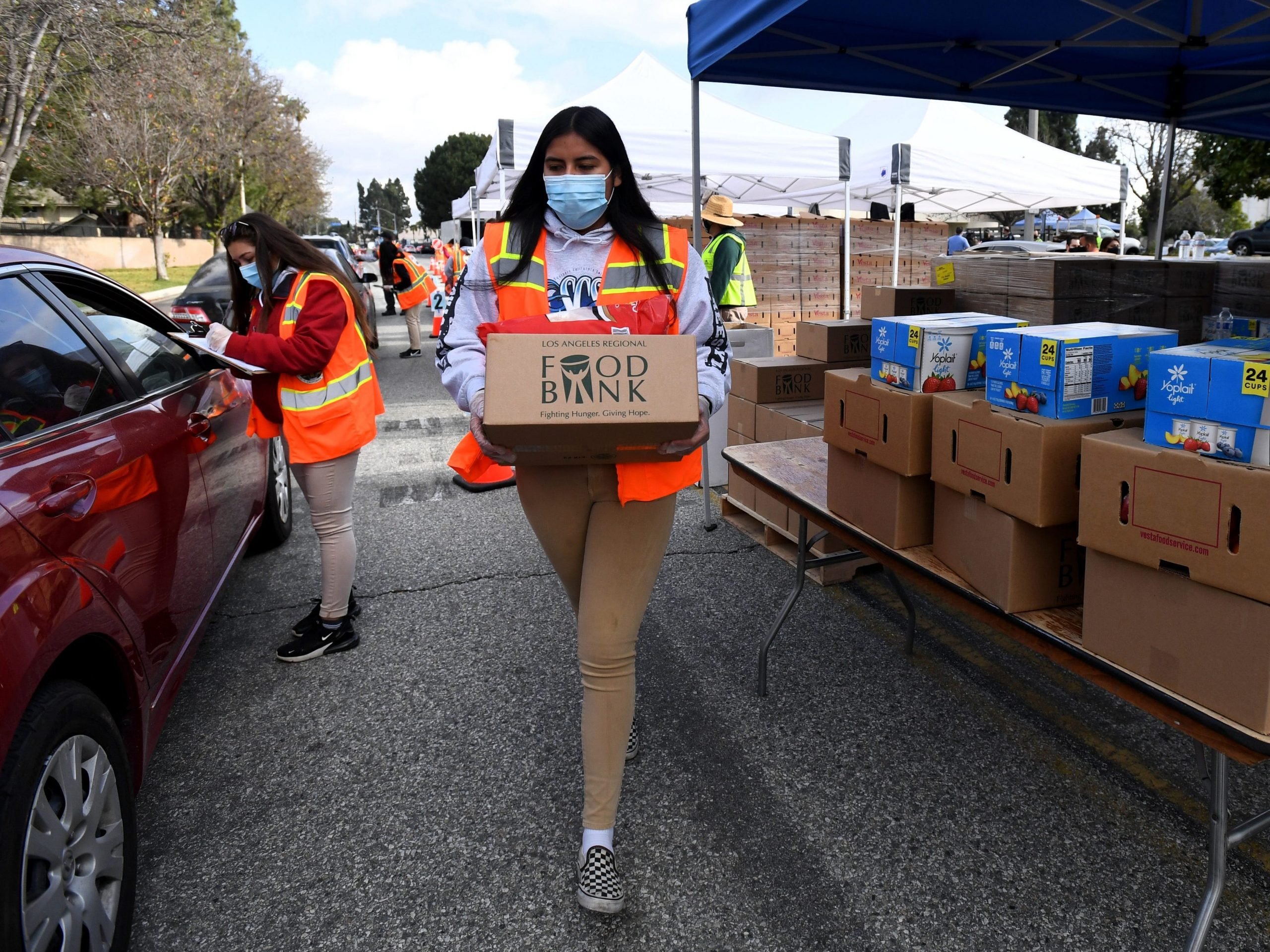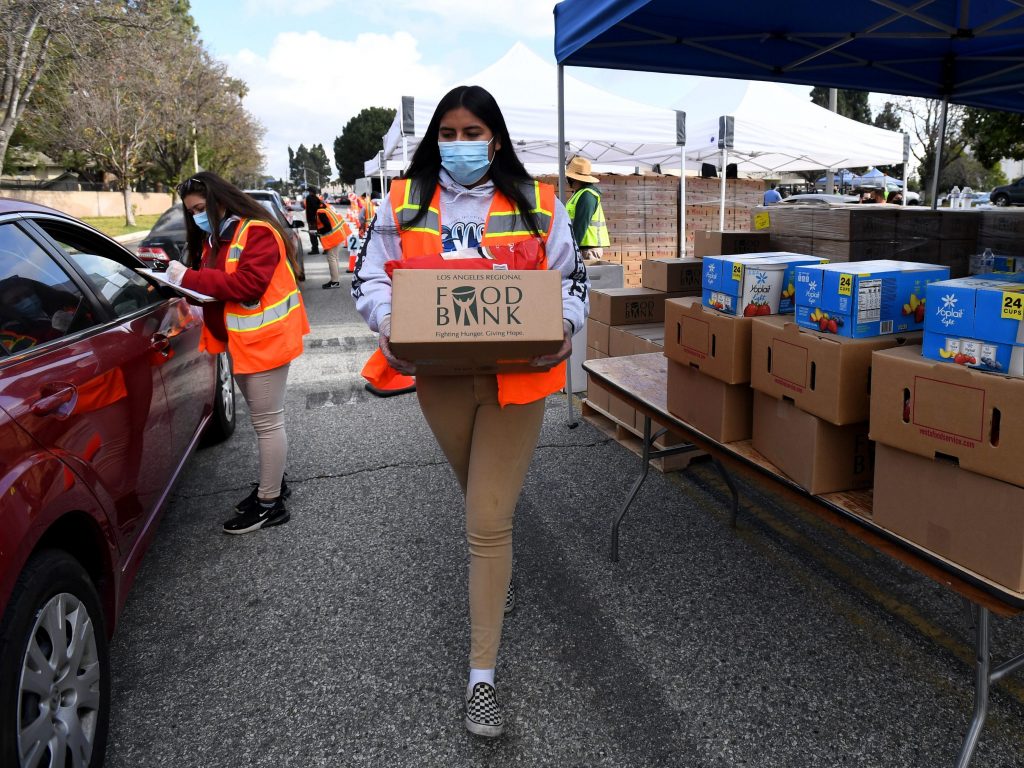
- The official poverty rate increased by about one percentage point, from 10.5% in 2019 to 11.4% in 2020.
- It could've been a lot worse – expanded unemployment benefits and stimulus checks helped lift millions out of poverty in 2020.
- The Supplemental Poverty Measure, which includes things like tax credits and stimulus checks, shows that measure of poverty dropped to 9.1% in 2020.
- See more stories on Insider's business page.
In 2020, poverty in America increased. But it could've been a whole lot worse.
Over the last 18 months, Americans were laid off or furloughed in droves. Some families struggled to have enough to eat for the first time, or experienced food insecurity, amid the pandemic. The unemployment rate reached a record high in April 2020, and millions of Americans relied on unemployment benefits. At the end of 2020, around 4 million Americans were considered long-term unemployed.
Because of all this, the official poverty rate went up 1.0 percentage point, as measured by the Census Bureau. However, another measure, which includes income like stimulus checks and government programs and is called the Supplemental Poverty Measure (SPM), shows these benefits helped reduce the number of Americans in poverty in 2020 by 2.6 percentage points.
The stimulus payments, expansions of government programs, and other programs used by Americans helped lift millions of people out of poverty, as seen in the following chart:
Social Security had a big impact on lifting Americans out of poverty. Per Census data, Social Security lifted 26.5 million people out of poverty in 2020. Stimulus checks lifted 11.7 million people out of poverty. Unemployment insurance didn't have as big an effect as the first two stimulus payments, but the expanded unemployment benefits did lift 5.5 million people out of poverty.
Unlike the Supplemental Poverty Measure, the official poverty rate did see an uptick last year.
There were 37.2 million people in poverty in 2020 - 3.3 million more than in 2019. The official poverty rate increased for the first time in five consecutive years, according to the Census Bureau's latest report and as highlighted in the following chart. The rate increased from a low of 10.5% in 2019 to 11.4% in 2020.
Bruce Meyer, a professor at the University of Chicago Harris School of Public Policy and whose research area includes poverty, called this annual increase by one percentage point while the SPM saw a decrease "striking" in an email to Insider.
The official rate uses pre-tax cash income and doesn't include things like stimulus checks, tax credits, or benefits like SNAP like the SPM does. So it doesn't take into account all the government expansions and stimulus given to Americans during the pandemic.
"The SPM is a post-tax and transfer poverty measure, so it captures expansion of unemployment insurance (like the official poverty measure), but also includes stimulus payments and expansions to SNAP that are not included in the official poverty definition," the Census Bureau wrote.
The SPM shows how expanded programs and aid during the pandemic helped lift Americans out of poverty
The Supplemental Poverty Measure dropped from 11.8% in 2019 to 9.1% in 2020. The Census Bureau notes that this is the lowest rate since 2009, the first year that the government agency published these rates.
Additionally, Zach Parolin, senior fellow at Columbia University's Center on Poverty and Social Policy and an assistant professor at Bocconi University told Insider in an email that research from the Center on Poverty and Social Policy shows that "this is the lowest rate of SPM poverty since at least 1967, the first year for which we have reliable data."
"The SPM did a better job of capturing the reduction in poverty due to the unprecedented government rescue effort, though the survey it relies on sharply understates the effect of unemployment insurance, so the true reduction in poverty was probably greater than 2.6 percent," Meyer told Insider in an email.
Parolin called today's report of the Supplemental Poverty Measure "remarkable."
"In a year of high unemployment, a global health crisis, and large uncertainty, the US welfare state met the challenge and led to a record low rate of SPM poverty," Parolin told Insider in an email.
Parolin told Insider in an email that a permanent expansion of the Child Tax Credit, which is only temporarily expanded for a year, would be one way to help keep poverty rates low in the future. Research from Columbia's Center on Poverty and Social Policy shows that the child tax credit helped lift 3 million children out of poverty after just the first advance monthly payment.
"Today's numbers demonstrate the incredible capability of the US welfare state when it is properly funded and applied," Parolin wrote. "In a turbulent year, the CARES Act and other income transfers kept food hardship in check and led to a record low SPM poverty rate. That is a clear success."

